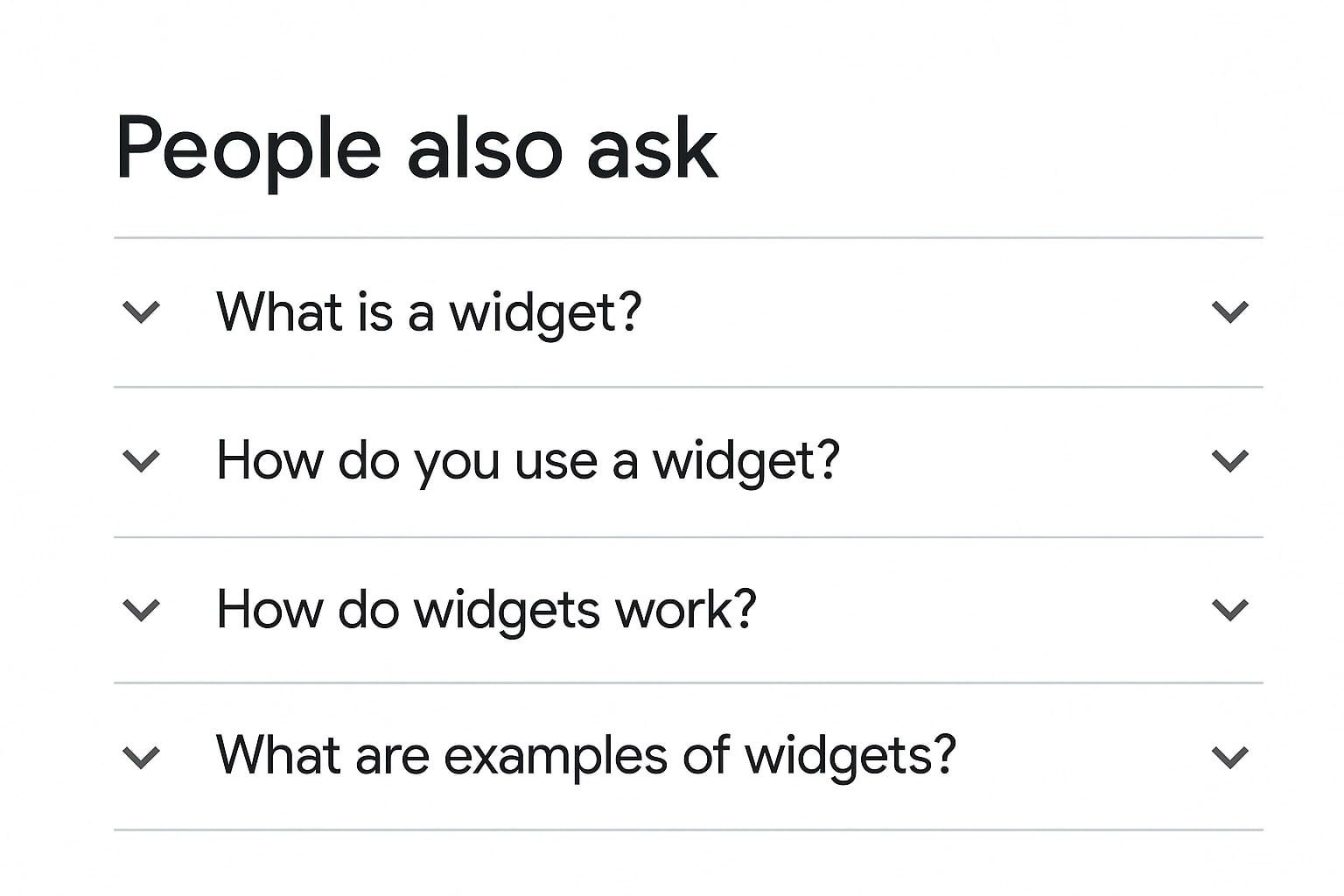
Understanding and Fixing Redirect Chains for Better SEO
What are redirect chains? Why they are detrimental to SEO and how to fix them
05/26/2025
🎉 Check out the official Plixu Chrome extension: Plixu AI SEO Helper

When it comes to search engine optimization (SEO), one of the most dynamic tools in Google’s search results is the People Also Ask (PAA) box. These interactive drop-down questions provide an incredible opportunity to capture attention, increase visibility, and drive traffic to your site. As an SEO expert, I’ve spent years fine-tuning content to rank in these sections, and I’ll guide you through the best practices, strategies, and insights.
The People Also Ask (PAA) box is a Google SERP feature that displays a series of related questions based on the user’s search query. When clicked, each question expands to reveal a brief answer sourced from a webpage, accompanied by a link to the original content. These boxes often appear near the top of search results and are highly interactive. PAA questions are dynamic and can expand endlessly, revealing new questions as users engage with them. This creates a powerful opportunity to increase your visibility on Google by ranking for these questions, often without needing to rank #1 in traditional organic results.
Ranking in the PAA section is significant for several reasons:
Optimizing for PAA has become a must for modern SEO. With the rise of search intent-focused algorithms, Google prioritizes content that directly addresses user queries. PAA is a clear manifestation of this shift. Here are key reasons why you should include PAA optimization in your strategy:
Now that we understand the importance of optimizing for PAA, let’s explore some best practices and strategies to help you improve your chances of ranking.
The first step in optimizing for PAA is identifying the right questions to target. PAA questions are typically user-intent-driven and focus on informational queries. To discover these questions:
By compiling a robust list of questions, you can strategically align your content to address these queries.
Google prioritizes content that answers questions directly and succinctly. Your answers should be formatted to meet the following criteria:
This format provides a direct response while encouraging users to click for more details.
The structure of your content plays a significant role in determining whether it appears in PAA. Follow these best practices:
Schema markup enhances the visibility of your content in SERPs, increasing the likelihood of appearing in PAA. By using structured data, you can help Google understand the context and format of your content.
Validate your schema using Google’s Rich Results Test to ensure proper implementation.
PAA questions often derive from long-tail keywords, which are more specific and intent-driven. These keywords are easier to rank for and align closely with user queries. To optimize for long-tail keywords:
Google values freshness, especially for PAA answers. Update your content periodically to include:
Use tools like Google Search Console and Ahrefs to track your performance in PAA. Focus on metrics like:
If performance is lacking, analyze competing content to identify gaps and adjust your approach.
While optimizing for PAA, beware of the following pitfalls:
Optimizing for People Also Ask is just one piece of the SEO puzzle. For a more comprehensive approach, visit Plixu to access cutting-edge tools and insights. Our services include:
Discover how Plixu’s advanced AI-driven platform can transform your SEO strategy and elevate your website’s performance. Start your journey to higher rankings today!
Looking to optimize your website for better performance and rankings? Try Plixu AI, the ultimate SEO audit tool powered by artificial intelligence. Get actionable insights in seconds!
Run A Free AI SEO Audit NowOptimizing for People Also Ask questions is a vital strategy in modern SEO. It allows you to reach a wider audience, drive traffic, and establish authority in your niche. By following the strategies outlined here—researching questions, structuring content effectively, implementing schema markup, and tracking performance—you can position your site to dominate PAA boxes and outperform competitors. Remember, consistent effort and adaptation to evolving search trends are key. With these techniques, you can unlock the full potential of People Also Ask optimization and elevate your SEO strategy to new heights.
People Also Ask (PAA) is a feature on Google’s search engine results pages (SERPs) that displays a list of related questions and answers related to the user’s initial query. It is an emerging SEO strategy that focuses on optimizing your content to appear in PAA boxes, increasing visibility and traffic to your site.
No, Plixu offers various services and tools to improve overall SEO performance, including AI SEO audits, UX/UI design analysis, speed insights, and more. While optimizing for People Also Ask is important, it should be part of a larger SEO strategy. So we help our clients with comprehensive solutions to elevate their website’s performance as a whole.
Optimizing for People Also Ask can positively impact your website’s overall SEO performance by driving more targeted traffic and increasing your visibility on SERPs. It also helps establish authority in your niche and improve user experience, which are crucial factors in ranking higher in search engines.
To optimize for People Also Ask, you need to research related questions and answers, structure your content strategically using headings and schema markup, focus on long-tail keywords, regularly update and refresh your content, and track performance to make adjustments as needed.
Answering the user’s intent behind a query is crucial in PAA optimization because it helps Google determine the relevance of your answer to their search. If you fail to address the intent behind the question, your content may not be featured in PAA boxes.
Yes, optimizing for PAA can boost your website’s rankings by increasing its visibility and traffic. However, it is just one aspect of SEO, and a comprehensive approach that includes other strategies is necessary for significant impact on ranking.
The best thing to improve SEO is to start now! Use our FREE SEO Analysis tool for general stats and tips on how to improve your website!
Try a free AI SEO Analysis
What are redirect chains? Why they are detrimental to SEO and how to fix them
05/26/2025

Boost your content's SEO! This checklist guides you through writing high-ranking, engaging articles and blogs
03/24/2025